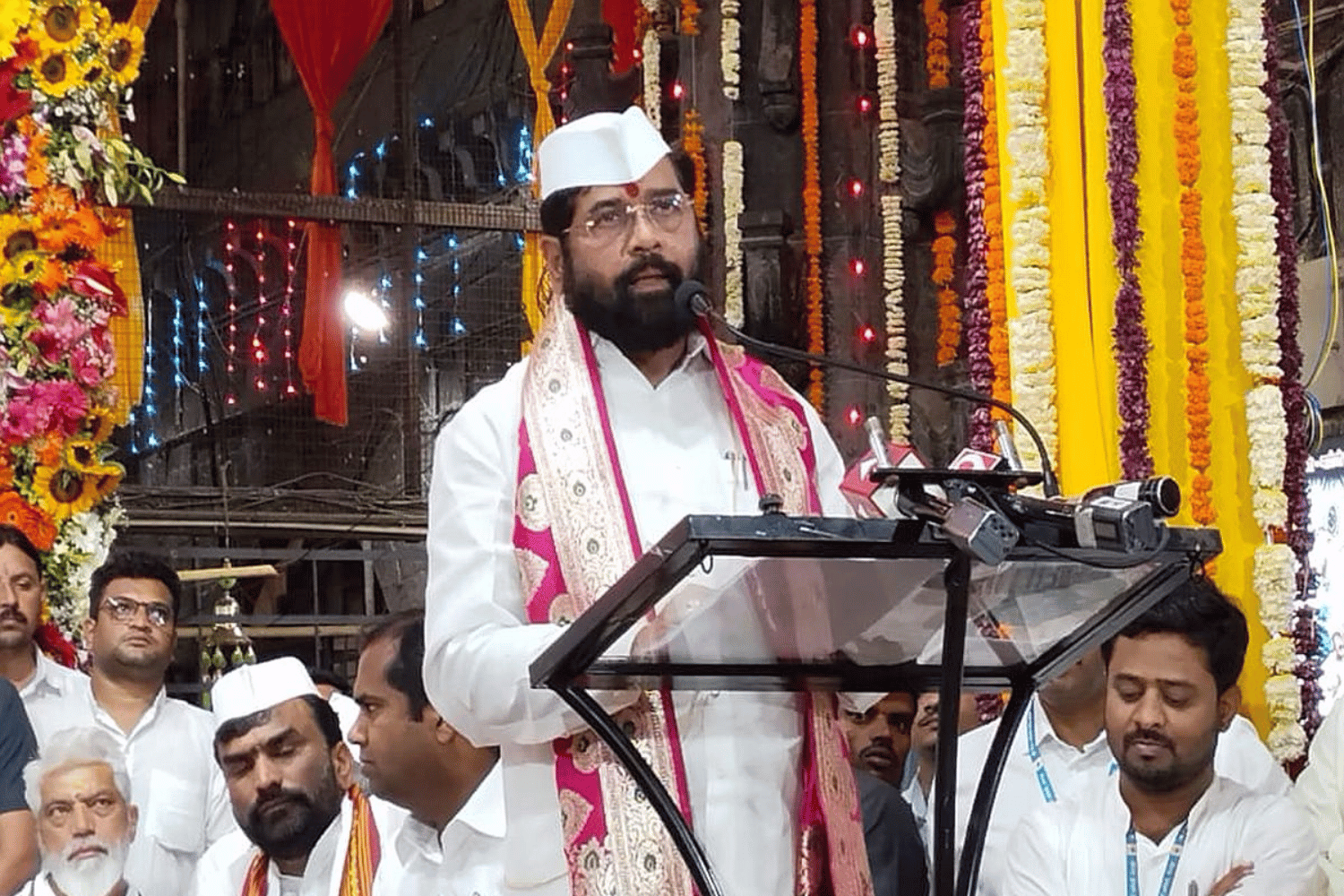_(1).webp)
Webinar Key Takeaways on “How Technology Can Help Corporates Reach Students From Smaller Cities?”
_(1).webp)
Start of the webinar:
Ranu Parwal (Founder, SkillsConnect.in and Acura Solutions) started the momentum of this webinar with his valuable insights, “the placement season all over the country is on. India has close to 39,000+ colleges across the country. There were fewer universities 10 years back. Today it has close to 1250+ universities, drawing attention from corporates and premium campuses to acquire and build the best possible talent.”
However, there is an irony into play here because many of the colleges are also getting shut down. The major reason can be lack of the right jobs as the campuses are unable to provide the right opportunities to their students at the time of graduation.
At the same time, corporates are on a rigorous hunt to acquire the crème de la crème talent from the pool of freshers from smaller cities and towns of the country.
But it’s not possible for the corporates to reach the small town campuses and educational institutions.
“SkillsConnect, our platform, tries connecting or builds an ecosystem which connects close to 13,000 colleges which is almost 32% of colleges of the country and helps corporates hire and engage digitally with them.”
Nilakantan Govindan (Ex VP HR, Reliance Retail, Chief Mentor, SkillsConnect) commented further about taking the lead of this webinar as the anchor, stating that this is a very important topic to discuss. The talent pipeline that can be developed in tier-2, tier-3 and other cities, and how technology can help this happen. We must all focus on it with multiple perspectives.
If we talk about the stakeholders of this ecosystem, those are primarily the corporates who are seeking out the candidates and the campuses, especially in the tier-2/tier-3 cities where they want to reach out to corporates to ensure their students get placed for the right jobs and at the right CTC.
In the midst of that, we should also focus on the candidates and how to take care of their growth journey through the constant development of their profitable and transferable skill sets. Educational institutes should be proactive in getting their students job-ready for their future jobs.
That’s the whole context we shall be exploring in this webinar today.
Recognising talent from smaller cities:
Nilankatan asked Shilpa whether corporates recognise that there is enough talent in small cities.
Shilpa took the question with grace and answered it with her witty and intelligent perspective.
“The post-pandemic era has definitely increased the technological adoption in smaller cities. This has helped tier-2/tier-3 cities to reduce the talent gaps to a greater extent. Things went virtual overnight when the pandemic struck. Many of the professionals from tier-1 cities moved back to their hometowns in tier-2/tier-3 cities and started working from their villages, setting an example and giving a ray of hope to aspiring entrepreneurs and talent in such cities to join the forces of the corporate world even from the comfort of their villages and small towns.”
- Shilpa Pai (Sr. Vice President, 3i Infotech Ltd)
Empowering tier-2/tier-3 cities with skill development opportunities is actually an investment for the future, leading to a collective progress of the society. These regions can be transformed into vibrant hubs of talent and innovation, contributing significantly to the nation’s growth story.
“You need partners like SkillsConnect to plug into those talent gaps between corporates and smaller town educational institutions.”
- Nilakantan Govindan (Ex VP HR, Reliance Retail, Chief Mentor, SkillsConnect)
“Talent from smaller cities is the best because of their resilience and grit in facing challenges while growing up and educating themselves. They’re flexible and adaptable and would be the best cog in the corporate mechanism for consistently maximising efficiency at all levels.”
- Ramchander Maddela (Head of HR, Dhanush Group)
Ritesh Advani (Vice President HR, GoldenSource) further narrated his experience.
“What has happened in the last 5 years is that talent has become untethered. They don’t need geography or any kind of label or bond to hold them back. They are more open to ideas, peer learning, and job sharing; they want purpose and focus in life. Today, talent from smaller cities want to transform their lives and make a living in larger cities with the right kind of work-life balance.
Being from the IT industry, I know for sure that the industry has recognised the major shift in talent origin fast and ahead of its time in contemporary industries. We saw it all, like remote work, centralisation of knowledge, data sharing, etc., during the pandemic.
Now, a lot of organisations have come back to work from the office except IT and some BFSI sectors or institutions in the post-pandemic era.”
“Talent from smaller cities is able and empowered to build the same kind of talent infrastructure as from the bigger cities nowadays.”
- Ritesh Advani (Vice President HR, GoldenSource)
Sasikala Vedam (HR Leader) started her response with a strong quote to keep in mind when talking about potential talent from smaller cities.
“Undoubtedly I have seen that corporates have looked at the potential talent from the smaller cities.”
- Sasikala Vedam (HR Leader).
Understanding the geographical location now no longer defines the talent.
Sasikala narrated a personal story going back to 2019-20, where she worked as a talent acquisition head. Earlier while using naukri.com, shine.com, and other talent marketplaces, their focus was only on acquiring talent from metro cities. However, they were not able to hire the way they wanted with this approach.
Then they dived deeper into the heatmaps of Naukri.com and saw a surprising revelation that the talent they wanted to acquire was actually the best from a city called Lucknow, which was not even actually in their radar before.
That insight changed their priorities in hiring the best talent and shifted their focus to smaller cities when finding the possible talent at the given budgets. They started hiring from cities like Indore, Raipur, Nagpur, Ahmedabad etc.
Offering virtual internships or smaller projects to the students online while reaching out to the smaller cities for the best talent is one of the best approaches, according to Sasikla, to enable tech and talent in a single touch.
Another way is that we offer virtual skill development programs that help us trigger inclusive hiring practices and promote diversity at all fonts.
Developing students' skills and moderate those at the same time:
Nilakantan asked Sumit Mukherjee (Vice President HR, HDFC ERGO) how he would respond to the understanding of people and students’ skills and how educational institutes can build and moderate those.
Presentation skills may not be up to the mark for the smaller town students. Their communication can also be challenging. However, at times, tier-2/tier-3 students show communication and future-ready skills at par with tier-1 or vice-versa.
But it is the exposure that the people need.
“The more exposure people have to the corporate world, the better will be their ability to communicate, to present facts, and to get the message across. The idea should be to groom people in the right direction.”
- Sumit Mukherjee (Vice President HR, HDFC ERGO)
Sumit has astonishing exposure and experience of 2 decades in the BFSI sector, and he commented with that lens to cater to the issue at hand. The BFSI sector has a large spread of talent across the country, he explained further.
So, it is often easier for the BFSI sector or companies to recruit people across various cities of tier-2 and tier-3 zones. The requirements for the BFSI sector across these cities are quite different and personalised.
The skill set they demand from these cities is not highly dependent on communication or presentable skills. However, communication skills always make a candidate stand apart in these tier-2 and tier-3 zones.
Ramchander Maddela (Head of HR, Dhanush Group) commented further that the talent from the smaller cities are affordable, are adaptable and skilful in delivering healthcare services with ample training to the natives of the rural areas.
Ramchander’s organisation goes to the campuses that do a lot of segmentation of the talent across cities for our IT and public service related requirements of the talent. They focus on hiring people who actually need the job. That is because such people are ready to do hard work, having the attitude to work 70 hours a week as toted by Mr Narayan Murthy.
Then we move the webinar toward talking about the upcoming and incumbent barriers to help these people develop their talent and what should the college and corporates do?
Shilpa Pai (Sr. Vice President, 3i Infotech Ltd) narrated a real-life example herself as her organisations in the past have realised that there is no need to go to big colleges unnecessarily when the best talent is coming from the smaller cities.
She was recommended Tirunelveli, a city in Tamil Nadu, which she never even heard of before, as one of the best education hubs of the country. There is a lot of untapped talent residing there with good colleges and education given to the students from early on.
They tied up multiple colleges to create a talent pipeline there. They also created an online platform for such people to go there and apply for jobs or partnerships.
This strategy helped their organisation create a renowned brand in itself in that city for connecting untapped talent with the right job opportunities.
She realised 3 things there:
- Attrition in tier-2 and tier-3 cities is quite lower than in tier-1 cities.
- The likelihood of the organisations to get the day zero slot for hiring in tier-2/tier-3 cities is higher than other cities.
- It helped their organisation to localise their brand in that region.
Additionally, there were a lot of language barriers. Thus, they reduced their aptitude test cut-off marks to get the best talent despite the language barriers. Finally, they ended up hiring 100+ people from that region.
They initiated the project of Tirunelveli to Texas to measure the ROI driven from the hired lot. Afterward, it was found that 80 percent of the lot that was hired is still billable. About 10% of those have seriously got the on-field or on-site opportunity.
Also, their hiring was almost 60% lower than that in tier-1 cities to acquire such an amount and quality of talent.
Sasikala Vedam (HR Leader) responded that they are looking at blended learning models to tackle the barriers to hiring these people from tier-2 and tier-3 cities in the IT sector. Next, they’re moving to skills-based hiring approaches to eliminate the bias from the process.
According to her, students must look at the curriculum to follow which is more aligned to the practicalities of getting employed and becoming ready for a corporate culture.
Organisations like hers are looking forward to testing the core competencies and expect institutions to develop these in their talented students from tier-2 and tier-3 cities.
Ritesh Advani (Vice President HR, GoldenSource) intervened and commented that it’s a two-way street. Look at it from the students' perspective as well, and leverage the technology to reach the corporates for job vacancies.
From an educational institute and corporate’s point of views, it is important to ensure that the students apply for the job, get the right training, they join the job on time, stay and grow with the organisation.
According to Ritesh, there are still gaps in terms of bridging infrastructure and for students and new hires to know what will happen when they are asked to relocate.
Sumit Mukherjee (Vice President HR, HDFC ERGO) had a different experience and viewpoint to share, narrating that there are a lot of factors to consider when we are hiring from smaller cities. There has to be an entire ecosystem that needs to be built and monitored around it for effectiveness in hiring and managing the talent pipeline.
Students' knowledge needs to be transferred into skills while getting the right training on the job. At the same time, we need to harp on the attitude one brings on board when they’re being interviewed for a job role.
Tusher from SkillsConnect shared the AI generated video on the webinar to highlight the values SkillsConnect can add into this ecosystem. This took the webinar to a whole new level to make it more interactive, gaining more insights into developing a better talent pool at the college level.
Questions and answers round of the webinar
Sunil Kabra (Director, ACE Human Capital Ltd) took forward the end of the webinar with highly engaging questions and answers round to cater to the questions put forward by the audience for this episode.
“We had a very huge and richly experienced panel today. The stories mentioned by Shilpa were amazing to hear and relate to.”
- Sunil Kabra (Director, ACE Human Capital Ltd)
Shilpa Pai commented that going to tier-2 and tier-3 gives organisations an opportunity to introduce our curriculum to colleges to change the way they educate and train their students to prepare for future jobs.
Ritesh Advani took another Q/A from the chat box by throwing his viewpoints on webinars and such sessions for connecting students from smaller cities to big corporate houses.
Corporate houses are always on the lookout for multiple engagement strategies to get students and candidates on such platforms to be able to drive and see if they are able to hire and acquire the right quality of talent.
Industry and HR leaders would love to gamify the entire virtual experience of interacting with candidates from smaller cities through:
- Hackathons
- Coding competitions
- Peer sharing competitions
Vicky Jain (Founder & CEO, uKnowva) explained his view point further, stating that, “Building end to end systems with engagement as one of the key areas, through platforms like uKnowva HRMS where we are catering to the user base of 300,00+ people daily, is a practical and pragmatic example.”
Most of the people are into operational excellence, and it’s HR that is also moving towards becoming more strategic in nature and tuning in with the management’s vision and mission as far as the growth of the business is concerned.
Thus, we need to touch base on the talent engagement initiatives quite systematically that not includes internal but also external talent engagement.
“Regularly engaging with the candidates through automated emails have resulted in almost 200%+ efficiency in their offer to joining ratio. That is the power of talent engagement at the preboarding level.”
- Vicky Jain (Founder & CEO, uKnowva)
Overall, the session was quite thorough, thoughtful, and interactive, soliciting responses from both ends of the panel to dive deeper into how technology is reshaping the way organisations reach best of their future talents from smaller cities.
Conclusion
The blog above talks about the key takeaways from the webinar we hosted on 6th April on “How Technology Can Help Corporates Reach Students From Smaller Cities?” You can listen and reshare the entire video of this webinar from our YouTube channel right away.
YouTube link of the webinar recording:
https://www.youtube.com/watch?v=KztjJiERrD0
Feel free to watch it and share it in your network or leave us with your comments to help us better the content along the way!



.webp)
